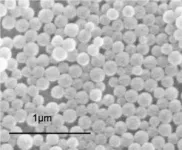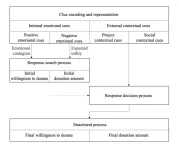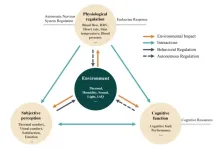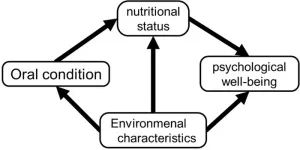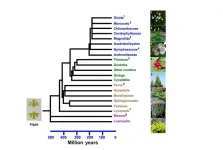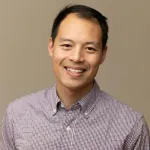(Press-News.org) Our built environment is aging and failing faster than we can maintain it. Recent building collapses and structural failures of roads and bridges are indicators of a problem that’s likely to get worse, according to experts, because it’s just not possible to inspect every crack, creak and crumble to parse dangerous signs of failure from normal wear and tear. In hopes of playing catch-up, researchers in Drexel University’s College of Engineering are trying to give robotic assistants the tools to help inspectors with the job.
Augmenting visual inspection technologies — that have offered partial solutions to speed damage assessment in recent years — with a new machine learning approach, the researchers have created a system that they believe could enable efficient identification and inspection of problem areas by autonomous robots. Reported in the journal Automation in Construction, their multi-scale system combines computer vision with a deep-learning algorithm to pinpoint problem areas of cracking before directing a series of laser scans of the regions to create a “digital twin” computer model that can be used to assess and monitor the damage.
The system represents a strategy that would significantly reduce the overall inspection workload and enable the focused consideration and care needed to prevent structural failures.
“Cracks can be regarded as a patient’s medical symptoms that should be screened in the early stages,” the authors, Arvin Ebrahimkhanlou, PhD, an assistant professor, and Ali Ghadimzadeh Alamdari, a research assistant, both in Drexel’s College of Engineering, wrote. “Consequently, early and accurate detection and measurement of cracks are essential for timely diagnosis, maintenance, and repair efforts, preventing further deterioration and mitigating potential hazards.”
But right now, they note, so many of the nation’s buildings, bridges, tunnels and dams are among the walking wounded that the first priority should be setting up a triage system. Before the Bipartisan Infrastructure Law, the American Society of Civil Engineers estimated a backlog of $786 billion in repairs to roads and bridges. Adding to the challenge is a growing shortage of skilled infrastructure workers — including inspectors and those who would repair aging structures.
“Civil infrastructures include large-scale structures and bridges, but their defects are often small in scale,” Ebrahimkhanlou said. “We believe taking a multi-scale robotic approach will enable efficient pre-screening of problem areas via computer vision and precise robotic scanning of defects using nondestructive, laser-based scans.”
Instead of a physical measurement interpreted subjectively by human eyes, the system uses a high-resolution stereo-depth camera feed of the structure into a deep-learning program called a convolutional neural network. These programs, which are being used for facial recognition, drug development and deepfake detection, are gaining attention for their ability to spot the finest of patterns and discrepancies in massive volumes of data.
Training the algorithms on datasets of concrete structure images turns them into crack crack-spotters.
“The neural network has been trained on a dataset of sample cracks, and it can identify crack-like patterns in the images that the robotic system collects from the surface of a concrete structure. We call regions containing such patterns, regions of interest,” said Ebrahimkhanlou, who leads research on robotic and artificial-intelligence based assessment of infrastructure, mechanical and aerospace structures in Drexel’s Department of Civil, Architectural, and Environmental Engineering.
Once the “region of interest” — the cracked or damaged area — is identified, the program directs a robotic arm to scan over it with a laser line scanner, which creates a three-dimensional image of the damaged area. At the same time a LiDAR (Light Detection and Ranging) camera scans the structure surrounding the crack. Stitching both plots together creates a digital model of the area that shows the width and dimensions of the crack and allows tracking changes in between inspections.
“Tracking crack growth is one of the advantages of producing a digital twin model,” Alamdari said. “In addition, it allows bridge owners to have a better understanding of the condition of their bridge, and plan maintenance and repair.”
The team tested the system in the lab on a concrete slab with a variety of cracks and deterioration. In a test of its ability to detect and measure small cracks, the system was sensitive enough to pinpoint and accurately size up the smallest of fissures — less than a hundredth of a millimeter wide — outperforming top-of-the-line cameras, scanners and fiber optic sensors by a respectable margin.
While human inspectors would still make the final call on when and how to repair the damages, the robotic assistants could greatly reduce their workload, according to the researchers. In addition, an automated inspection process would reduce oversights and subjective judgement errors that can happen when overworked human inspectors take the first look.
“This approach significantly reduces unnecessary data collection from areas that are in good structural condition while still providing comprehensive and reliable data necessary for condition assessment,” they wrote.
The researchers envision incorporating the multi-scale monitoring system as part of a larger autonomous monitoring framework including drones and other autonomous vehicles — like the one proposed by the Federal Highway Administration’s Nondestructive Evaluation Laboratory, which would use an array of tools and sensing technologies to autonomously monitor and repair infrastructure.
“Moving forward, we aim to integrate this work with an unmanned ground vehicle, enhancing the system's ability to autonomously detect, analyze, and monitor cracks,” Alamdari said. “The goal is to create a more comprehensive, intelligent and efficient system for maintaining structural integrity across various types of infrastructure. Additionally, real-world testing and collaboration with industry and regulatory bodies will be critical for practical application and continuous improvement of the technology.”
END
Drexel researchers propose AI-guided system for robotic inspection of buildings, roads and bridges
2024-01-30
ELSE PRESS RELEASES FROM THIS DATE:
Residents of rural ‘glades’ take a ‘leap of faith’ to combat dementia
2024-01-30
The prevalence of Alzheimer’s disease and related dementias (ADRD) is disproportionately high among rural, racially/ethnically diverse older residents. In fact, they face up to an 80 percent greater risk of cognitive impairment in older age, and 2.5 times potentially preventable ADRD-related hospitalizations compared to urban dwellers. It is estimated that early and accurate diagnosis in the mild cognitive impairment stage could save up to $7 trillion in patients’ health and long-term care costs by 2050.
To address these health disparities in rural underserved populations, researchers from Florida ...
Emotions drive donation behavior in disease relief projects on a fundraising platform
2024-01-30
The digital age has profoundly changed how we communicate as humans. Today, we can regularly interact with people we are unrelated to and unacquainted with in real time across the world. Because of this, individuals can now engage in prosocial behaviors, including cooperating, sympathizing, helping and donating, with complete strangers, but the motivating factors behind these behaviors are poorly understood. Analysis of data generated from a fundraising website suggests that positive emotions elicit higher total donation amounts while negative emotions result in higher individual donation amounts.
Fundraising ...
Comfort isn’t only a feeling, it’s a study
2024-01-30
A lot of factors go into an individual’s comfort, and it’s more than just how one feels about the temperature
The thermal environment refers to the physical surroundings as it pertains to the heat exchange of an individual and its environment. Naturally, the thermal environment also relates to comfort, or more specifically, thermal comfort. This type of comfort is an important metric to measure an individual’s feelings as it relates to their environment and can be directly associated with health, efficiency, comfort, and energy consumption. ...
After 7 years, alcohol control program still reduces child abuse
2024-01-30
COLUMBUS, Ohio – A neighborhood alcohol control project in Sacramento that reduced cases of child abuse and neglect soon after implementation still had a positive impact seven years later, a new study found.
Results showed that, in one of the neighborhoods where the program was put into place, total entries into foster care were reduced by 11.8% and alcohol-related foster care entries were reduced by 11.2% a full seven years after implementation.
These new results were not as strong as those found right after the project was implemented, and there are other caveats to the success of the program. But the results are still very encouraging, said Bridget Freisthler, ...
Prenatal substance exposure and childhood mental health
2024-01-30
An observational study found links between prenatal substance exposure and mental health in children 10–12, but also found that controlling for environment and genetics eliminated many associations. Qiang Luo and colleagues analyzed longitudinal data from almost 10,000 participants in the Adolescent Brain Cognitive Development cohort, looking for associations of maternal self-report of prenatal exposure to caffeine, alcohol, tobacco, and marijuana with mental health outcomes from age 10 to 12. Although the authors found many associations between prenatal exposure to the ...
Gene-based therapy may slow development of life-threatening heart condition
2024-01-30
A new study in mice shows that replacement of a dysfunctional gene could prolong survival in some people with arrhythmogenic right ventricular cardiomyopathy (ARVC), a rare inherited disorder in which the muscular walls of the heart progressively weaken and put patients at risk of dangerous irregular heartbeats.
The investigational treatment targets the loss of function of a gene implicated in many cases of ARVC, plakophilin-2 (PKP2). The PKP2 gene provides instructions for making a protein that holds heart tissues together. When the gene — one of several thought to contribute to the disease —is defective ...
Oral health indirectly influences subjective psychological well-being in older adults
2024-01-30
In humans, oral health influences general health and well-being in many ways. Other than reducing the need for oral rehabilitation later in life, maintaining good oral health reduces the risk of several systemic diseases. Therefore, investing time and effort into improving oral health can be highly beneficial for older adults. However, whether the health benefits of improved oral health extend to psychological domains remains unclear.
Positive psychological well-being is known to positively affect the survival rates of both healthy and unhealthy populations. Thus, to increase life expectancy, it is important to identify the factors associated with ...
Asparagus and orchids are more similar than you think
2024-01-30
What does an asparagus have in common with a vanilla orchid? Not much, if you are just looking at the two plants’ appearances. However, when you look inside - their leaves are more similar than you would think – as revealed by the composition of their cell walls.
By studying plant cell walls – which are to plants what skeletons are to humans – we can reveal the composition of how leaves and stems of plants are actually constructed. This is exactly what a team of University of Copenhagen researchers has done, in a large comprehensive study. In doing so, they have created something truly novel: a large "reference catalogue" ...
DNA particles that mimic viruses hold promise as vaccines
2024-01-30
Using a virus-like delivery particle made from DNA, researchers from MIT and the Ragon Institute of MGH, MIT, and Harvard have created a vaccine that can induce a strong antibody response against SARS-CoV-2.
The vaccine, which has been tested in mice, consists of a DNA scaffold that carries many copies of a viral antigen. This type of vaccine, known as a particulate vaccine, mimics the structure of a virus. Most previous work on particulate vaccines has relied on protein scaffolds, but the proteins used in those vaccines tend to generate an unnecessary immune response that can distract the immune system from the target.
In the mouse study, the researchers found that the ...
Citizen scientists contribute to motor learning research
2024-01-30
A new research study examined the results from data generated by citizen scientists using a simple web-based motor test. The big data approach provides researchers with a unique way to explore how people correct for motor control errors. The resulting insights may one day pave the way for personalized physical therapy or tailor an athlete’s training routine. The results are available in the January 30th issue of the journal Nature Human Behaviour.
“This exploratory approach does not replace lab based studies, but complements ...


